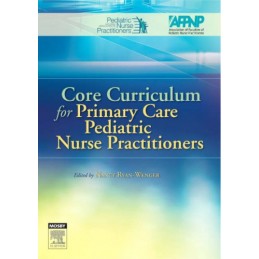Opis
2007 AJN Book of the Year Award WinnerWritten by expert pediatric nurse practitioners, this resource is a fully endorsed compendium of essential information. Using an easy-to-use outline format, it defines the parameters of the specialty by outlining the entire scope of PNP practice and covers everything in the Pediatric Nurse Practitioners (PNP) certification exams. In light of the increase in the number of PNP programs and students seeking certification, Core Curriculum for Primary Pediatric Nurse Practitioners offers the big-picture view that every PNP needs.
Szczegóły produktu
Indeks
31647
EAN13
9780323027564
ISBN
9780323027564
Opis
Rok wydania
2006
Numer wydania
1
Oprawa
miękka foliowana
Liczba stron
1080
Wymiary (mm)
184 x 260
Waga (g)
1750
Section 1: Role of the Pediatric Nurse Practitioner Section 2: Health Assessment and Physical Examination Section 3: Special Topics in Health Promotion and Disease Prevention Section 4: Diagnosis and Management of Common Illness in Children and Adolescents Section 5: Diagnosis and Management of Chronic Conditions in Children and Adolescents Section 6: Diagnostic, Medication, and Treatment Guides for Children and Section 7: Using Evidence-Based Practice to Improve Outcomes in Outpatient Settings


 Dostawa
Dostawa
 Płatność
Płatność
 Zwroty
Zwroty
